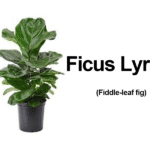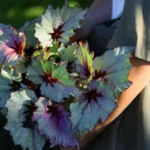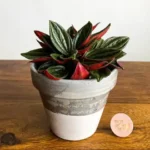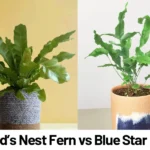Meet Sinningia bullata: A Unique Houseplant with Personality
If you’re looking to grow something distinctive in your indoor garden, Sinningia bullata might just be your next botanical adventure. Known for its textured leaves and tuberous form, this plant is part of the Gesneriad family, which also includes African violets. But Sinningia bullata is in a class of its own. With furry, bullate foliage and intriguing growth habits, it brings an exotic flair to your houseplant collection while remaining manageable even for beginners.
Understanding the Beauty of Sinningia bullata
Sinningia bullata is native to Brazil, where it thrives in rocky, mountainous habitats. As a tuberous perennial, it stores energy in its thick tuber, which enables it to survive seasonal dry periods. In your home, it adapts well to the right conditions and is surprisingly easy to care for once you understand its basic needs.
What makes Sinningia bullata so captivating is its unique texture. The deeply puckered, almost blistered leaves are covered with fine hairs, giving them a velvety appearance. This textural trait, called “bullation,” is where the plant gets its name. In addition to its foliage, it produces tubular orange to red flowers that attract pollinators and plant lovers alike.
Key Features of Sinningia bullata
- Foliage: Deep green, heavily textured, and fuzzy with a unique bullate surface.
- Tuber: Grows above or just at soil level and stores water and nutrients.
- Flowers: Usually tubular and vibrant, often appearing in spring and summer.
- Growth Style: Compact, making it suitable for pots and small indoor spaces.
Light and Temperature Requirements
Like many tropical plants, Sinningia bullata prefers bright, indirect light. Too much direct sun might cause leaf scorching, while too little light can lead to leggy growth and few flowers. A north- or east-facing window works well in most homes. Fluorescent lights can also support growth if natural light is insufficient.
Temperature-wise, this plant enjoys warm conditions. Aim to maintain a range between 65°F and 80°F (18°C to 27°C). Avoid placing this plant near drafty windows or heating vents, as sudden changes can stress the plant. Though it can tolerate brief drops in temperature, it should never experience frost.
Watering and Humidity
Sinningia bullata has a unique relationship with water due to its tuber. Overwatering is a common mistake with this plant. Instead of watering on a strict schedule, check the moisture quality of the soil and only water when the top 1–2 inches feel dry.
Tips for Watering Successfully:
- Use a well-draining potting mix to prevent soggy roots.
- Allow the soil to dry between waterings.
- Water the soil directly; avoid getting water on the leaves to prevent rot and fungal issues.
Humidity is less critical for Sinningia bullata compared to many tropical plants, but it does appreciate moderate levels. If your home is particularly dry, especially in winter, consider using a humidity tray or placing the plant near others to create a more humid microclimate. However, avoid excessive misting, which can increase the risk of fungal issues on its hairy leaves.
Soil and Potting
Creating the right growing medium is essential for the health and longevity of Sinningia bullata. The ideal soil should be airy and fast-draining to protect the tuber from rot.
Recommended Soil Mix:
- 1 part peat moss or coco coir (for water retention)
- 1 part perlite or pumice (to improve aeration and drainage)
- 1 part orchid bark or coarse sand (to help replicate its natural rocky habitat)
When potting, choose a container with drainage holes. Shallow pots work well since the plant has a compact root system and the tuber often sits close to the surface. Be mindful not to bury the tuber too deep—leave the top visible to watch for any signs of rot or growth changes.
Fertilizing and Feeding
This plant isn’t a heavy feeder, but it benefits from regular, balanced feedings during the growing season. Use a diluted, water-soluble fertilizer once a month from spring through early autumn.
Best Fertilizer Practices:
- Use a balanced fertilizer (like 10-10-10 or 20-20-20) diluted to half strength.
- Apply during active growth and flowering periods.
- Avoid feeding during dormancy (typically winter or after flowering concludes).
Too much fertilizer can cause salt buildup or damage the roots. Always water the plant thoroughly before fertilizing to prevent potential burn to the roots.
Pruning and Dormancy
While Sinningia bullata doesn’t require much pruning, removing spent flowers and any yellowing leaves helps maintain a neat appearance and encourages new growth. Use sterile scissors or pruning shears to avoid introducing pathogens.
Like many tuberous plants, Sinningia bullata experiences a period of dormancy, usually in the cooler months. During this time, growth will slow or stop, and some leaves may yellow and drop. This is completely normal.
Handling Dormancy:
- Reduce watering significantly—water just enough to prevent the tuber from shriveling.
- Stop fertilizing until new growth appears.
- Keep the plant in a slightly cooler area during this rest period (60°F – 65°F or 15°C – 18°C).
Propagation Made Simple
One enjoyable aspect of growing Sinningia bullata is propagating it. The most common method is by leaf cuttings, though it can also be grown from seeds or by dividing tubers if they’re large enough.
Steps to Propagate from Leaf Cuttings:
- Choose a healthy, mature leaf with a firm petiole.
- Cut the petiole cleanly and insert it into a moist, well-draining mix (such as a 1:1 mix of perlite and peat moss).
- Cover with a humidity dome or plastic bag to retain moisture, but offer ventilation to prevent mold.
- Place the container in bright, indirect light.
- In a few weeks, miniature tubers should begin forming near the base of the leaf petiole.
This simple propagation method is satisfying and cost-effective, helping you expand your collection or even share this unique plant with friends.
Common Problems and Solutions
Sinningia bullata is generally resilient, but like all houseplants, it has its share of potential issues. Understanding what to look for can help keep your plant healthy year-round.
Potential Pests:
- Aphids: May gather around flower buds. Spray with insecticidal soap or rinse off with water.
- Spider mites: Look for fine webbing and yellow stippling on leaves. Increase humidity and treat with neem oil if necessary.
- Mealybugs: Wipe away with rubbing alcohol on a cotton swab and monitor for recurrence.
Other Concerns and Fixes:
- Yellow leaves: Often a sign of overwatering or nutrient deficiency. Adjust care accordingly.
- No flowers: Could indicate insufficient light, irregular feeding, or lack of dormancy rest.
- Tuber rot: Caused by soggy soil. Remove the plant from the pot, trim damaged tuber parts, and repot in dry, fresh soil.
Final Thoughts
Sinningia bullata is a plant with charm and personality. Its unusual leaves and seasonal blooms make it a standout in any indoor garden. While it may seem exotic, it’s actually quite approachable for growers of all levels once its growing habits are understood. With the right balance of light, water, and rest, your Sinningia bullata will reward you year after year with a fascinating display of growth and texture.
Whether you’re a seasoned houseplant enthusiast or just getting into the world of tuberous plants, Sinningia bullata is a worthy companion that brings both beauty and botanical intrigue into your home.
References
- Clark, J. L. (2020). Gesneriads at a Glance: A Horticultural Guide to the Gesneriaceae Family. Botanical Insights Publishing.
- Skog, L. E., & Boggan, J. K. (2007). World Checklist of Gesneriaceae. Smithsonian Institution.
- Royal Horticultural Society. (n.d.). Sinningia bullata. Retrieved from https://www.rhs.org.uk/








